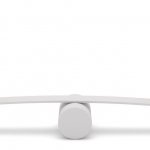Chapter three of the research project or the research methodology is another significant part of the research project writing. In developing the chapter three of the research project, you state the research method you wish to adopt, the instruments to be used, where you will collect your data and how you collected it.
This chapter explains the different methods to be used in the research project. Here you mention the procedures and strategies you will employ in the study such as research design, research area (area of the study), the population of the study, etc.
You also tell the reader why you chose a particular method, how you planned to analyze your data. Your methodology should be written in a simple language such that other researchers can follow the method and arrive at the same conclusion or findings.
You can choose a survey design when you want to survey a particular location or behavior by administering instruments such as structured questionnaires, interviews, or experimental; if you intend manipulating some variables.
The purpose of chapter three (research methodology) is to give an experienced investigator enough information to replicate the study. Some supervisors do not understand this and require students to write what is, in effect, a textbook.
A research design is used to structure the research and to show how all of the major parts of the research project, including the sample, measures, and methods of assignment, work together to address the central research questions in the study. The chapter should begin with a paragraph reiterating the purpose of the study.
It is very important that before choosing a method, try and ask yourself the following questions:
Will I generate enough information that will help me to solve the research problem by adopting this method?
For instance, you are attempting to identify the influence of personality on a road accident, you may wish to look at different personality types, you may also look at accident records from the FRSC, you may also wish to look at the personality of drivers that are accident victims, once you adopt this method, you are already doing a survey, and that becomes your methodology.
Your methodology should aim to provide you with the information to allow you to come to some conclusions about the personalities that are susceptible to a road accident or those personality types that are likely to have a road accident. The following subjects may or may not be in the order required by a particular institution of higher education, but all of the subjects constitute a defensible methodology chapter.
HOW TO WRITE CHAPTER THREE OF YOUR RESEARCH PROJECT - WRITING A RESEARCH DESIGN
A qualitative study does not have variables. A scientific study has variables, which are sometimes mentioned in Chapter 1 and defined in more depth in Chapter 3. Spell out the independent and dependent, variables. An unfortunate trend in some institutions is to repeat the research questions and/or hypotheses in both Chapter 1 and Chapter 3. Sometimes an operational statement of the research hypotheses in the null form is given to set the stage for later statistical inferences. In a quantitative study, state the level of significance that will be used to accept or reject the hypotheses.
Pilot Study
In a quantitative study, a survey instrument that the researcher designed needs a pilot study to validate the effectiveness of the instrument, and the value of the questions to elicit the right information to answer the primary research questions in. In a scientific study, a pilot study may precede the main observation to correct any problems with the instrumentation or other elements in the data collection technique. Describe the pilot study as it relates to the research design, development of the instrument, data collection procedures, or characteristics of the sample.
Instruments
In a research study, the instrument used to collect data may be created by the researcher or based on an existing instrument. If the instrument is the researcher created, the process used to select the questions should be described and justified. If an existing instrument is used, the background of the instrument is described including who originated it, and what measures were used to validate it.
If a Likert scale is used, the scale should be described. If the study involves interviews, an interview protocol should be developed that will result in a consistent process of data collection across all interviews. Two types of questions are found in an interview protocol: the primary research questions, which are not asked of the participants, and the interview questions that are based on the primary research questions and are asked of the participants.
Procedure
In a qualitative study, this is the section where most of the appendices are itemized, starting with letters of permission to conduct the study and letters of invitation to participate with the attached consent forms. Sample: this has to do with the number of your participants or subjects as the case may be. Analysis (how are you planning to analyze the results?)
EFFECTIVE GUIDE AND METHODOLOGY SAMPLES
This chapter deals effectively with the research methods to be adopted in conducting the research, and it is organized under the following sub-headings:
- Research Design
- Area of Study
- The population of the Study
- Sample and Sampling Techniques
- Instruments for Data Collection
- The validity of the Instrument
- Reliability of the Instrument
- Administration of the instruments
- Scoring the instruments
- Method of Data Collection
- Method of Data Analysis
Research Design:
This has to do with the structure of the research instrument to be used in collecting data. It could be in sections depending on different variables that form the construct for the entire topic of the research problems. A reliable instrument with a wrong research design will adversely affect the reliability and generalization of the research. The choice of design suitable for each research is determined by many factors among which are: kind of research, research hypothesis, the scope of the research, and the sensitive nature of the research.
Area of Study:
Research Area; this has to do with the geographical environment of the study area where the places are located, the historical background when necessary and commercial activities of that geographical area. For example, the area of the study is Ebonyi State University. At the creation of Ebonyi State in 1996, the Abakaliki campus of the then ESUT was upgraded to Ebonyi State University College by Edict no. 5 of Ebonyi State, 1998 still affiliated to ESUT with Prof. Fidelis Ogah, former ESUT Deputy Vice-Chancellor as the first Rector. In 1997, the Faculty of Applied and Natural Sciences with 8 departments was added to the fledging University, and later in 1998 when the ESUT Pre-Science Programme was relocated to Nsukka, the EBSUC Pre-Degree School commenced lectures in both Science and Arts in replacement of the former. This study focused on the students of the Business Education department in Ebonyi state university.
The population of the Study
The population is regarded in research work as the type of people and the group of people under investigation. It has to be specific or specified. For example educational study teachers in Lagos state. Once the population is chosen, the next thing is to choose the samples from the population.
According to Uma (2007), the population is referred to as the totality of items or object which the researcher is interested in. It can also be the total number of people in an area of study. Hence, the population of this study comprised of all the students in the department of Business Education, Ebonyi State University which is made up of year one to four totaling 482. The actual number for the study was ascertained using Yaro-Yamane's formula which stated thus:
n = N
1-N (e)2
Where;
N is the Population
1 is constant
e is the error margin
Then, n = 482
1+482(0.05)2
482
1+1.16
= 482
2.16
= 214.35 approximately 214
Sample and sampling technique:
It may not be possible to reach out to the number of people that form the entire population for the study to either interview, observe, or serve them with copies of the questionnaire. To be realistic, the sample should be up to 20% of the total population. Two sampling techniques are popular among all the sampling techniques. These are random and stratified random sampling techniques. (A). in Random Sampling, the writers select any specific number from a place like a school, village, etc. (B). In Stratified Random Sampling, one has to indicate a specific number from a stratum which could be a group of people according to age, qualification, etc. or different groups from different locations and different considerations attached.
Instruments for Data Collection:
This is a device or different devices used in collecting data. Example: interview, questionnaire, checklist, etc. instrument is prepared in sets or subsections, each set should be an entity thus asking questions about a particular variable to be tested after collecting data. The type of instrument used will determine the responses expected. All questions should be well set so as to determine the reliability of the instrument.
The validity of the Instrument
This has to do with different measures in order to determine the validity and reliability of the research instrument. For example, presenting the drafted questionnaire to the supervisor for scrutiny. Giving the questionnaire to the supervisor for useful comments and corrections would help to validate the instrument.
Reliability of the Instrument
The test-retest reliability method is one of the simplest ways of testing the stability and reliability of an instrument over time. The test-retest approach was adopted by the researcher in establishing the reliability of the instrument. In doing this 25 copies of the questionnaire were administered on twenty-five selected respondents. After two weeks another 25 copies of the same questionnaire were re-administered on the same group. Their responses on the two occasions were correlated using Pearsons Product Moment Correlation. A co-efficient of 0.81 was gotten and this was high enough to consider the instrument reliable.
Administration of the instruments:
Here, the writer states whether he or she administers the test personally or through an assistant. He also indicates the rate of return of the copies of the questionnaire administered.
Scoring the instruments:
Here items on the questionnaire or any other device used must be assigned numerical values. For example, 4 points to strongly agree, 3 points to agree, 2 points to disagree, and 1 point to strongly disagree.
Table of Analysis
|
S/N |
Item |
SA |
A |
D |
SD |
|
|
|
|
|
|
|
|
ONCE |
TWICE |
THRICE |
|
|
|
|
Method of Data Collection
The researcher collected data using the questionnaire. Copies of the questionnaire were administered by the researcher on the respondents. All the respondents were expected to give maximum co-operation, as the information on the questionnaire is all on things that revolve around their study. Hence, enough time was taken to explain how to tick or indicate their opinion on the items stated in the research questionnaire.
Method of Data Analysis
In this study, the mean was used to analyze the data collected. A four (4) point Likert scale was used to analyze each of the questionnaire items.
The weighing was as follows:
VGE—————- Very Great Extent (4 points)
GE—————– Great Extent (3 points)
LE—————– Little Extent (2 points)
VLE—————- Very Little Extent (1 point)
And;
SA—————– Strongly Agree (4 points)
A——————- Agree (3 points)
D—————— Disagree (2 points)
SD—————- Strongly Disagree (1 point)
The mean of the scale will then be determined by summing up the points and dividing their number as follows with the formula:
x = ∑fx
N
= = 2.5
Where; x= mean
f= frequency
X= Nominal value of the option
∑= summation
N= Total Number
Therefore, the mean of the scale is 2.5.
This means that any item statement with a mean of 2.50 and above is considered agreed by the respondents and any item statement below 2.5 is considered disagreed.
EDITORS SOURCE: How To Write Chapter Three Of Your Research Project (Research Methodology)













No Comments